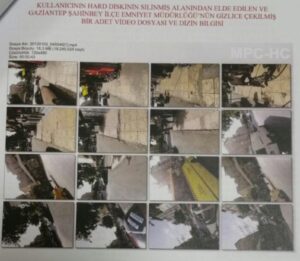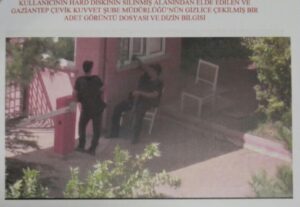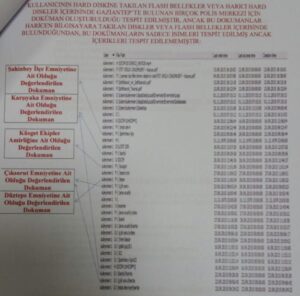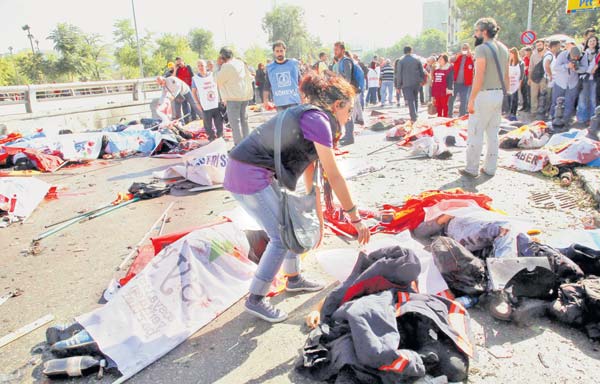Abdullah Bozkurt/Stockholm
Turkish intelligence agency MIT provided the Islamic State in Iraq and Syria (ISIS) with a secret manual for the law enforcement agency in charge of border provinces and rural areas in order to help the terrorists evade detection.
The 832-page manual, which covers ‘domestic security” and “map reading” and was used in classes of gendarmes in military schools, was found on a computer hard drive seized from the home of ISIS terrorists. The ISIS members were part of the main Turkish cell led by İlhami Balı, the mastermind behind multiple bombing attacks in Turkey and a Turkish intelligence agency asset.
The documents were believed to have been handed over by MIT, which contracted multiple attacks with ISIS assets in Turkey in order to promote the political agenda of the government of President Recep Tayyip Erdoğan. His ruling Justice and Development Party (AKP) lost its majority in parliament in the June 2015 elections for the first time in its 13 years of rule but regained it in snap elections in November 2015 amid major terror attacks that were blamed on ISIS.
Indictment that shows how a suspected ISIS suicide bomber and his handler were detained in Turkey:
MIT’s secret and illegal operation was exposed on October 30, 2015, when the police wanted to stop a car with license plate number 21 FN 027 during a routine traffic stop in the Gazi Muhtar Paşa neighborhood of Turkey’s southeastern province of Gaziantep, located on the Syrian border. The driver tried to run the checkpoint but was cut off by police units. Abdulkadir Demirel, a 26-year-old ISIS terrorist in the car, threw a hand grenade at the police, but it failed to explode. The police detained Demirel and his associate, 32-year-old Yusuf Cabael.
The police found two grenades, one handgun and a suicide bomb vest packing seven kilograms of TNT in the car. In the first police questioning at the scene, Demirel admitted he was ordered by Balı to carry out a suicide attack on the pro-Kurdish Peoples’ Democratic Party (HDP) office in Istanbul by October 31, 2015. He said Cabael helped him cross into Turkey from Syria and that they were en route to Istanbul. The statement confirms that the ISIS attack was timed to Turkey’s election agenda and that the ISIS mastermind wanted the attack to take place before the November elections.
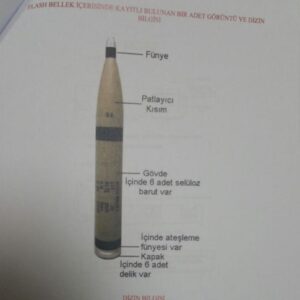
A laptop and three external hard drives were also seized from the suspects. An examination of the laptop and hard drives by IT experts as part of the evidence in the criminal case against the suspects was later submitted to the Gaziantep 2nd High Criminal Court, which tried the case.
The 49-page IT report revealed that ISIS was provided with a sensitive document that showed how to avoid gendarmerie detection in villages in border areas. It was also discovered that ISIS militants scouted nine police stations in the area, ran surveillance and secretly photographed them. One of the photographs was taken in front of the provincial police headquarters that was attacked by an ISIS suicide bomber on May 1, 2016, killing two police officers.
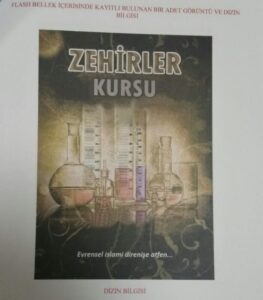
Two manuals that were prepared by ISIS in Turkish also showed what type of terror attacks the organization had planned. One was titled “Course on Poisons” (Zehirler Kursu), and the other was “Course on Explosives” (Patlayıcılar Kursu). It was believed that ISIS planned to poison water reservoirs in major cities to wreak havoc and create chaos. Some of the documents were retrieved by experts from deleted parts of the hard drives.
Nordic Monitor previously published a secret internal police document that revealed how Balı, better known by his nom de guerre Abu Bakr or Ebu Bekir, was hosted in a luxury hotel in Ankara by MIT after a series of deadly attacks in Turkey. The investigators who exposed Balı’s links to MIT were removed by the Erdoğan government, which buried the investigation into MIT. Three years later, in April 2019, only Demirel and Cabael were found guilty at the end of their trial and sentenced to imprisonment, while no investigation was conducted into the links to the Turkish intelligence agency.
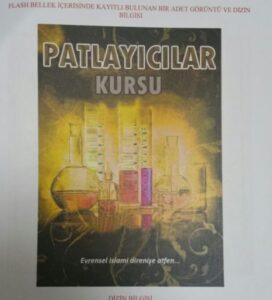
Three deadly attacks that took place in 2015 and killed 142 people carried the signature of Balı, who was listed as the number one suspect in a suicide bomb attack ― the deadliest in Turkey’s history ― on October 10, 2015 in Ankara. The explosion killed 105 civilians, including the two suicide bombers, as ISIL militants targeted NGOs and the supporters of left-wing and pro-Kurdish parties who were holding a peace rally outside the city’s main train station just weeks ahead of the November 1, 2015 snap election. The ISIL suicide attack in the town of Suruç on July 21, 2015 that left 33 dead was also planned by Balı, according to Turkish authorities.
